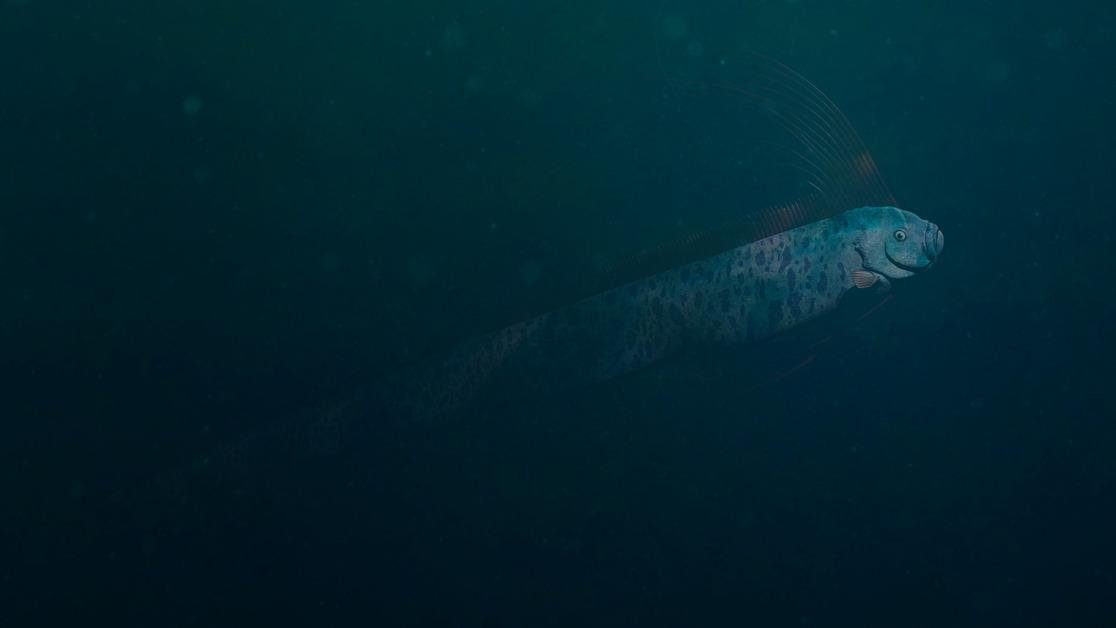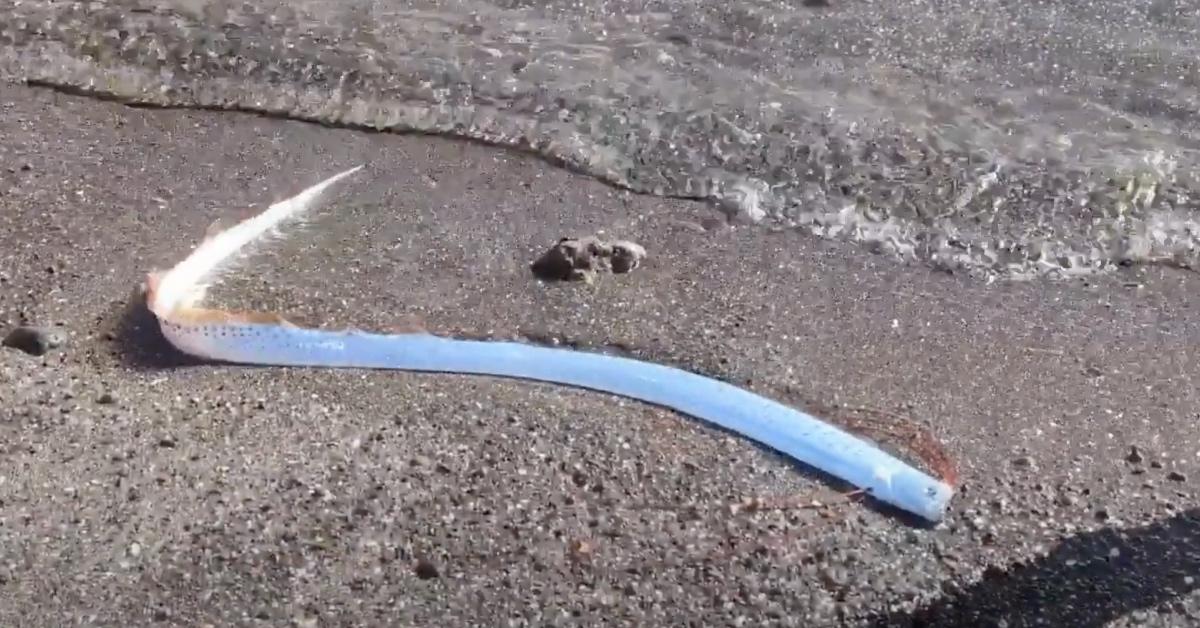Is There Any Merit To "Doomsday Fish Theory?" Oarfish Sighting in Mexico Makes Beachgoers Nervous
Oarfish, or "doomsday fish," have bad reputations.
Updated Feb. 19 2025, 9:19 a.m. ET
For many, news that a new species had emerged from the deep sea (or at least, a rare species not often seen by the general public) would warrant a viral moment. However, the appearance of oarfish instead sometimes sparks a negative reaction.
According to Japanese folklore, the elusive fish is thought to signify an impending disaster, historically spotted right before natural disasters like earthquakes and tsunamis.
Keep reading for everything you need to know about the "doomsday fish theory," explained.

What is the "Doomsday Fish" theory?
The "Doomsday Fish theory" is connected to the Japanese myth that the oarfish is the "Messenger from the Sea God's Palace" and appears in shallow waters before a seismic or doomsday occurrence. Hence, the oarfish is often called the "Doomsday Fish," per National Geographic.
The oarfish's "bad omen" reputation has been slightly reinforced over the years.
The most recent sighting of an oarfish took place on Feb. 9, 2025, at Playa El Quemado in Baja California Sur, per Men's Journal. The fish was flailing in the shallows, prompting beachgoers to try and redirect the creature back into deeper water, but the oarfish kept turning back. As of writing, there has been no earthquake following the sighting, but past incidents have proven otherwise.
In 2017, six oarfish were seen just a few days before an earthquake in the Philippines killed six people, per ABC7.
Similarly, in August 2024, just two days before a 4.6 earthquake struck Los Angeles, kayakers and snorkelers spotted an oarfish in San Diego, per the New York Post. While the oarfish in question was tragically deceased, researchers from the Scripps Institution of Oceanography obtained the body to determine why a juvenile oarfish was in shallow waters.
In November 2024, a second oarfish was found on a beach in Encinitas in southern California, as reported by the Scripps Institution of Oceanography to the Guardian. A month later, a magnitude 7 earthquake struck the West Coast, per CNN.
The "Doomsday Fish" may be no more than a myth.
Many scientists and divers are not convinced of any connection between earthquakes and the fish. Hiroyuki Motomura, a professor of ichthyology at Kagoshima University.
Motomura told the New York Post in 2023, “There is no scientific evidence of a connection, so I don’t think people need to worry. I believe these fish tend to rise to the surface when their physical condition is poor, rising on water currents, which is why they are so often dead when they are found.”
Oceanographer and ecologist at Louisiana State University, Mark Benfield, told National Geographic that massive seismic activity would move more than one oarfish toward the shore.
Benfield also said, "It's hard to imagine what sort of phenomenon would occur before an earthquake that would cause these oarfish to leave the [mesopelagic zone] to move towards shore and strand."
The zone the oarfish live in, the mesopelagic zone, is actually several zones removed from the ocean floor, where seismic activity occurs. Therefore, oarfish are not a good signal for a natural disaster.
The scariest thing about the oarfish is arguably its size.
The oarfish can measure much bigger than six feet. According to National Geographic, the chilling sea serpent can reach 56 feet in length and weigh up to 600 pounds. They often have a shimmering silver complexion with blue spots.
National Geographic also reports that although oarfish live in deep waters, they often rise to temperate and tropical shallow waters, believed to be pushed to the surface by strong currents.
The species lives 200 to 1,000 meters below the ocean surface. They feed on small crustaceans and krill, which are harder to find in surface waters. In addition to the lack of food in shallow waters, oarfish are highly susceptible to fatal injury from harsh wind, and this could explain why most oarfish found in shallower waters are often dying or dead.
This article, originally published on July 20, 2023, has been updated.

